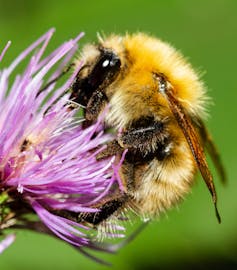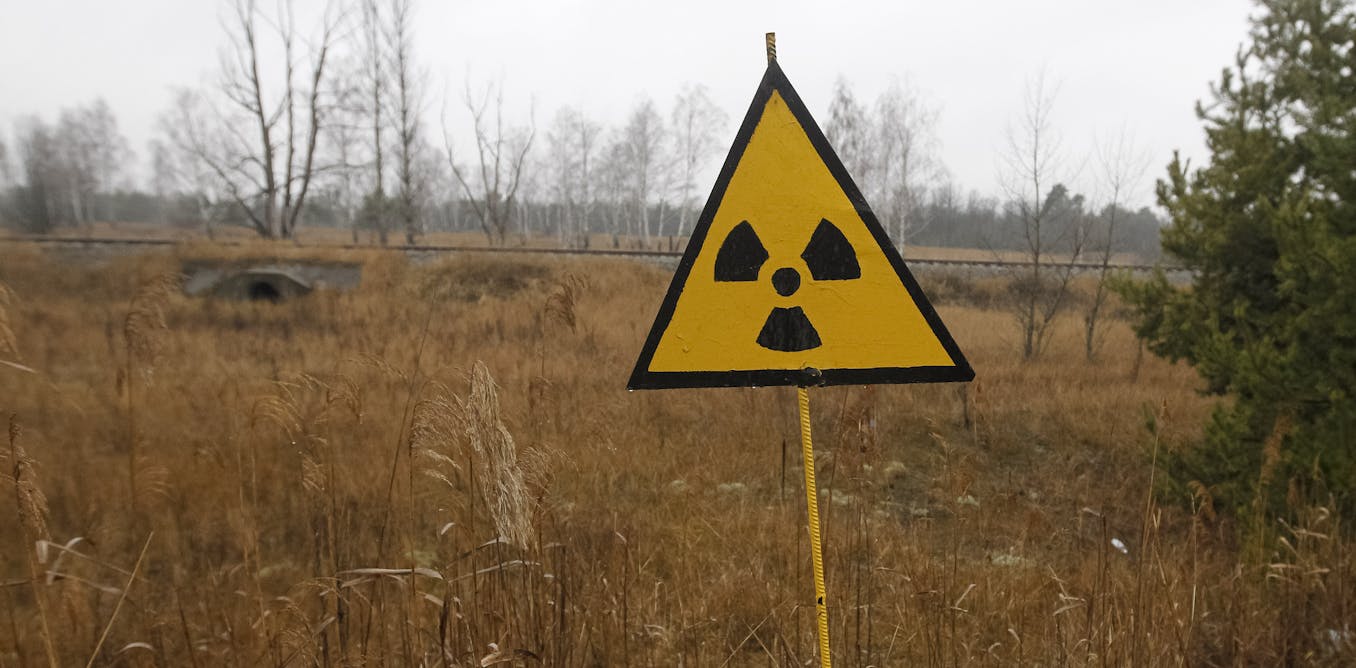Chernobyl: bumblebees still at risk from radiation nearly 35 years on
While long-term exposure of lower levels of radiation for wildlife around Chernobyl is still being debated, new research provides insight into the effects on bumblebee populations.
Nov. 4, 2020 • 7 min • Source
In the early hours of April 26 1986, reactor four of the Chernobyl nuclear power plant in Ukraine exploded, causing the largest nuclear disaster in history. More than 350,000 people were evacuated, and a 4,700km² exclusion zone was formed in Ukraine and Belarus. Despite the intervening 34 years, there is still uncertainty about the effects of the radiation exposure on wildlife living in the Chernobyl exclusion zone (CEZ).
Many imagine Chernobyl to be a nuclear wasteland, where wildlife is struggling to survive or is severely mutated. But this is not the case. Much of the exclusion zone is relatively uncontaminated (with radiation levels close to that of unexposed places) and wildlife is thriving in the absence of humans – with some species having reappeared .
However, some parts of the CEZ have radiation levels high enough to affect wildlife. These areas are predominantly along what is called the North and West Trace, where the wind blew the contamination after the accident. Located on the West Trace, the Red Forest is a 10km² area surrounding Chernobyl and remains the most contaminated area in the CEZ.
Scientists are divided as to whether there are effects on wildlife living in these contaminated areas, with some studies reporting Chernobyl as a refuge for wildlife or, conversely, with serious consequences for the wildlife living there.
Such effects on wildlife following acute radiation exposure are reasonably well understood. But the effects of long-term exposure of lower levels of radiation, as seen currently within the CEZ are still being debated.
When it comes to insects, our research provides insight into the effects of Chernobyl-level radiation dose rates on bumblebees by estimating the impact and determining the shape of the dose-response relationship.
Plight of the bumblebee
Using a radiation facility at the University of Stirling, we studied the effect of dose rates typically seen in the CEZ on commercial bumblebee colonies that were exposed for a month.
We chose bumblebees for several reasons: first, these insects are essential pollinators so any effects may have consequences for the ecosystem; second, there are studies on the impact of pesticides showing how bumblebees respond to stress; and third, bumblebees are used within the International System for Radiological Protection (ICRP) which sets guidelines for every country to adhere to. However, at the moment there is little data on how bees respond to chronic radiation exposure.
We found that exposure to dose rates comparable to the CEZ resulted in a reduction in the number of queens produced from colonies – with upper estimates of a 30-45% reduction compared with unexposed colonies. Queens are important because bumblebees are annual, socially organised insects, which means that colonies only live for one year and only the queen reproduces with help from the workers for food collection and colony maintenance. The queens from the previous year will hibernate over winter and start a new colony in the spring.

The queen starts a new colony and produces workers until the end of summer when she changes to either male or new queen production. Afterwards, the colony dies and the new queens hibernate again.
New queens are significantly larger than males and are considered to be more resource intensive to produce. The more queens produced, the more bumblebees nests there will be the following year. A reduction in queen production is a common response to stress and has been shown in exposure to insecticides .
We also showed that bumblebee colonies grew more slowly when exposed to radiation, reaching peak weight a week later than unexposed colonies. The study did not find an effect on colony weight or how long the colony or individual bees lived. The relationship between dose rate and effects was not linear, which would indicate a proportional increase in radiation would directly result in a decrease in queen production. Instead, the relationship was a curve showing a more significant proportionate response occurred at lower radiation levels.
What this means for Chernobyl and beyond
These findings predict that the most contaminated areas of the Chernobyl exclusion zone are likely to reduce bumblebee reproduction and delay colony growth. This has the potential to negatively affect pollination and overall ecosystem function in the Chernobyl exclusion zone.
This new data shows effects on bumblebees are happening at dose rates previously thought safe for insects, and the current international recommendations will need to be re-evaluated. It should be noted that the dose rates at which we exposed bumblebees are well above those seen in the environment from practices such as nuclear energy generation and radionuclide therapy used in medical treatment for cancer.
Interestingly, other unpublished field research from this project has shown a high abundance and diversity of bumblebees across the Chernobyl exclusion zone. In part, this is due to the abandoned agricultural land, which is now wildflower meadow, providing a perfect habitat for bumblebee nesting and feeding, and demonstrating the complexity in understanding the consequences of effects in the field. Further laboratory and field-based studies are needed to fully understand the impact of radiation exposure in sites such as Chernobyl.
Katherine Raines receives funding from Natural Environment Research Council, the Environment Agency and Radioactive Waste Management Ltd. She is affiliated with the Society for Radiological Protection.



